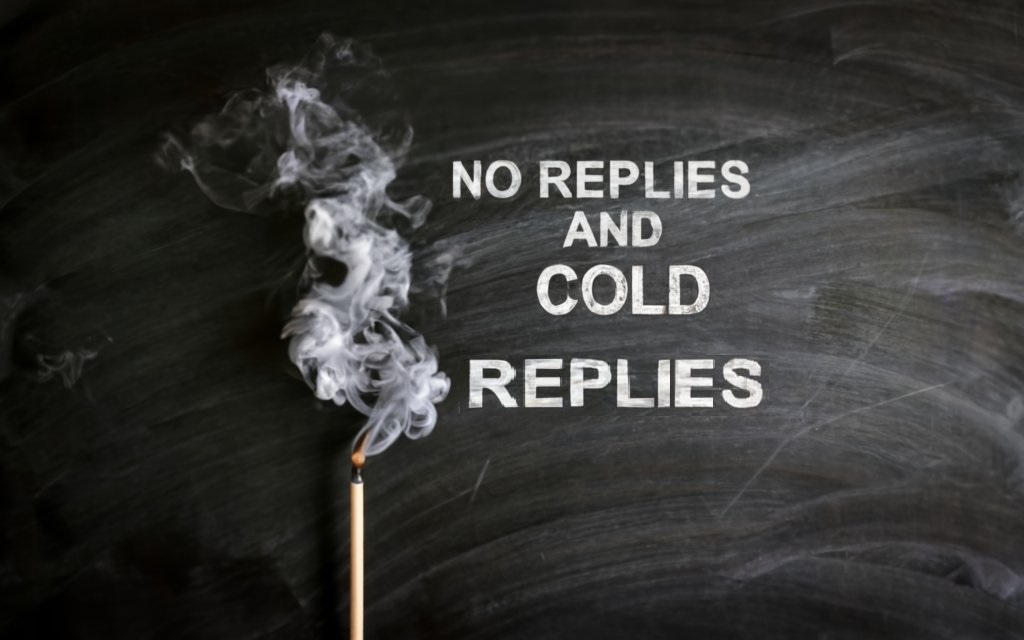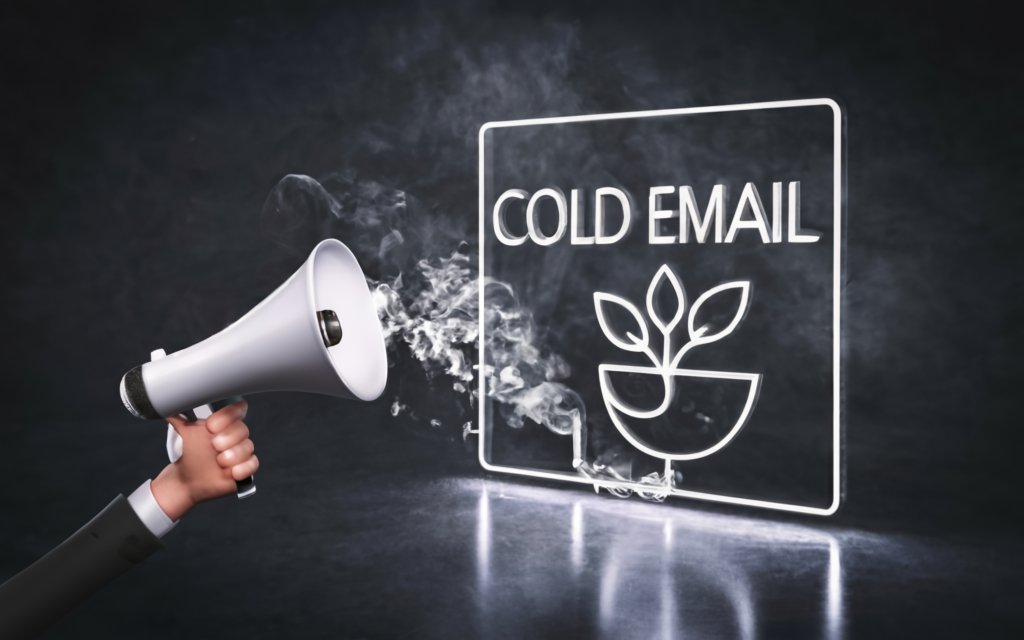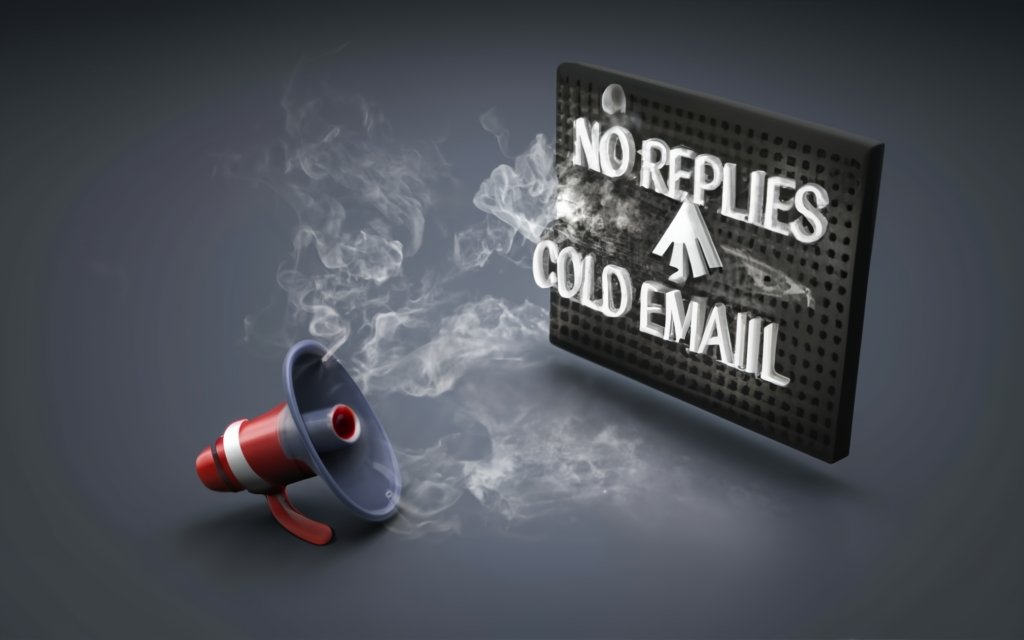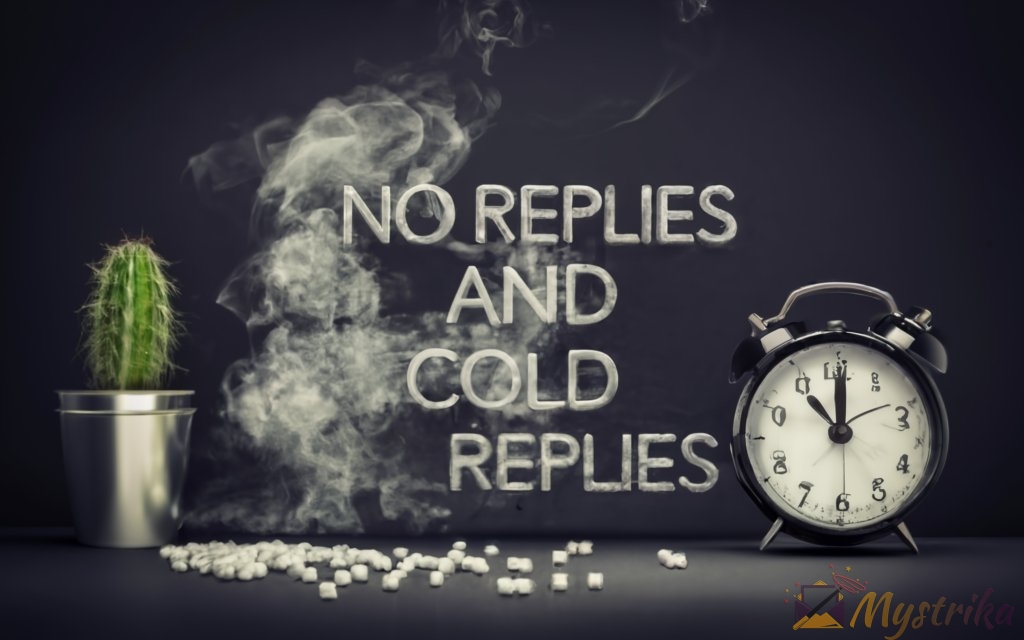Cold email is hard. Getting responses seems like a miracle. But the job isn’t done once they reply – your follow-up will determine sales success. Learn how to craft compelling responses, avoid no-reply addresses, nurture leads, and turn cold contacts into customers.
The thrill of getting a response to a cold outreach email is unmatched. Your well-crafted message resonated, cutting through the noise of their crowded inbox. Now they’re actually interested in what you have to say. Congrats! But before popping the champagne, remember – the hard work isn’t over.
Even more important than the initial cold message is the follow-up email. This make-or-break exchange will determine whether the lead fizzles or becomes a loyal customer. Crafting an engaging response is both art and science. You must pique their interest, provide value, establish trust, and nurture the budding relationship.
Why You Should Avoid Using No-Reply Email Addresses
Cold email outreach is all about starting a conversation with prospects. You want to come across as warm, friendly, and willing to engage. But using a no-reply email address like [email protected] does the opposite – it tells prospects not to bother reaching out. Let’s explore why no-reply addresses damage the customer experience, best practices for configuring your “from” email, and how to measure the impact through A/B testing.
It Damages the Customer Experience
Imagine you receive an email from a clothing company promoting their latest sale. You’re interested in learning more, so you hit reply to ask a question. But then you notice the email is from [email protected]. Now you’re frustrated – it feels like they don’t actually want to hear from you.
This is the downside of no-reply addresses. Even if you explicitly say “no-reply” in the name, many prospects will still try to respond. And when they can’t get through, it leaves a bad taste in their mouth.
Some key stats on the importance of two-way conversations:
- 25% of consumers have unsubscribed from emails due to lack of human touch.
- 72% of customers will share a positive experience with 6 or more people.
- It takes 12 positive experiences to make up for one negative experience.
The bottom line? Email is meant to be conversational. No-reply addresses block that conversation before it can start, damaging the customer experience.
Best Practices for Configuring Your “From” Email Address
Instead of a no-reply address, use a valid email linked to your domain. For example:
If you send different types of emails, create unique addresses for each:
- promotions@
- news@
- support@
This lets you route replies to the appropriate team while keeping the customer experience consistent.
Some best practices:
- Keep the “from” name short, simple, and professional. Avoid [email protected].
- Use consistent branding in the name. Don’t switch between Your Company, Company Name, etc.
- Set up an auto-responder to confirm receipt and expected response time. This sets proper expectations with prospects.
- Use BCC to forward replies to the appropriate team member.
While you may get some spam and out-of-office replies, it’s a small price to pay for enabling two-way conversations. Replying to questions and concerns is well worth the effort.
How to Measure the Impact Through A/B Testing
It’s impossible to know how no-reply addresses impact your metrics without testing. The best way is to run an A/B split test:
- Create two email campaigns that are identical except for the reply-to address.
- Send Campaign A from [email protected].
- Send Campaign B from a normal email address like support@.
- Divide your list randomly between the two campaigns.
- Analyze the results across key metrics:
- Open rate
- Click rate
- Bounce rate
- Unsubscribe rate
- Sales
The group that receives the no-reply address should perform worse across all metrics if the address truly damages the experience. Prospects will be less likely to open, click, or convert.
A/B testing provides definitive proof of how reply-to addresses impact your emails. If the no-reply campaign underperforms, it’s clear those addresses should be avoided. Testing can reveal insights that assumptions and guesses never will.
The takeaway? No-reply addresses may seem convenient in the short term, but they create a one-sided conversation that damages customer trust. Take the time to configure real email addresses, route replies properly, and respond to questions. The investment will pay off in higher open rates, lower unsubscribes, and more sales.

What to Do When You Get a Response to a Cold Email
Getting a response to a cold email is a big win. But the job isn’t done yet – you need to craft a compelling follow-up to keep the conversation going. In this comprehensive guide, we’ll explore best practices for responding to cold email replies, including:
- Understanding prospect intent
- Replying quickly to continue momentum
- Keeping the focus on their needs
- Maintaining a personalized tone
- Providing valuable information
- Answering all questions thoroughly
- Avoiding overly salesy follow-ups
- Having a clear next step and CTA
- Following up on social media
- Using email automation carefully
Follow these steps and you’ll turn more cold email responses into hot sales leads.
Read and Understand Their Intent
When you receive a reply, start by carefully reading it and analyzing their intent. Ask yourself:
- Why did they respond?
- What are they looking to learn/accomplish?
- What concerns do they have?
- What objections need to be overcome?
Put yourself in their shoes. They took time to reply, so keep that momentum going by having an authentic, value-focused conversation.
Pay attention to specifics in their reply for clues about intent:
- Questions asked – these highlight information they need to move forward.
- Objections raised – address these head-on in your follow-up.
- Requests made – provide any info or resources asked for.
- Compliments given – build on positive feedback.
Understanding intent ensures your follow-up directly addresses their needs and moves the conversation forward logically.
Reply ASAP to Continue the Conversation
Time is of the essence with cold email responses. Strive to respond within minutes or hours, not days. Quick replies:
- Keep momentum going after initial interest.
- Allow you to capitalize on attention.
- Show professionalism and responsiveness.
- Establish a real back-and-forth dialogue.
- Differentiate you from other slow responders.
Some best practices for fast replies:
- Send cold emails within your working hours so you can respond quickly. Avoid early morning or late evening sends.
- Set up notifications or alerts when receiving responses. Prioritize these for fast turnaround.
- Have template responses ready to go on topics like pricing, demos, free trials, etc. Personalize before sending.
- If delayed in responding, acknowledge the late reply and apologize. Don’t leave them hanging.
Replying quickly strengthens the human connection and shows you truly value their time and interest. Don’t squander the opportunity through slow responses.
Keep the Focus on Their Needs
When a prospect responds, it means your cold email resonated with a pain point or need. Double down on understanding those needs in your reply. Ask yourself:
- What business goals are they trying to achieve?
- What problems are they facing?
- How could my product uniquely help them?
Keep the focus on their challenges, not your product features. Share specific examples of how you’ve helped others like them. Provide social proof through case studies and testimonials. Give them added reason to believe you’re the solution.
Avoid the temptation to immediately launch into a product pitch. Make it about their issues first, then position your product as the ideal solution. This customer-focused approach is crucial for converting cold leads.
Maintain a Personalized Tone
Personalized cold emails may have sparked the initial reply, but don’t get complacent. Carry that personalized tone into your follow-ups.
Use their name, company, and any personal details learned during outreach. Reference previous points made in your conversations. This shows you’re engaged and this is an actual dialogue, not merely exchanged templates.
Avoid vague introductions like “Thanks for connecting.” Get right to the core of your last conversation. Jog their memory on why they were interested in the first place.
Sprinkle in light humor when appropriate to your relationship. Forward any relevant articles, videos, or resources you think they’d enjoy based on prior discussions.
These thoughtful touches help humanize you and strengthen rapport with each reply. Don’t lose the personal touch that got you the response.
Don’t Overwhelm with Too Much Information
It’s tempting to unleash your entire sales arsenal after a cold email reply. Avoid overwhelm by considering what information they need next to move forward.
If they requested a demo, send calendar availability – don’t attach a 20-page product datasheet.
If they had pricing questions, address those directly – don’t send a 100-slide product deck.
Take it one step at a time. Follow their lead and answer only the questions asked. There will be time for more in-depth information once interest solidifies into an opportunity.
Sending overly salesy collateral too early can be off-putting. Keep a tight focus on their most pressing needs for now. You can always provide additional info later when relevant.
Answer All Their Questions Thoroughly
If the prospect replied with specific questions, ensure you provide complete answers in your response.
Avoid partial or vague responses that leave them hanging. This forces them to follow up again just to get the full information needed to move forward.
If you need clarification on any questions asked, don’t hesitate to request it. It’s perfectly fine to ask for more details or context around their inquiry.
You want to give them a substantive response, not waste time going back and forth. Complete, thorough answers help advance the conversation much faster.
Don’t Push for an Immediate Sale
A cold email response means they’re interested but likely still early in the buying journey. Avoid high-pressure sales tactics pushing them to convert immediately.
Instead, focus on providing value and building the relationship. If appropriate, offer a demo or free trial to let them experience your product firsthand.
Collect feedback on what they like/dislike. Identify any blockers to adoption. Guide them gently through the sales process – don’t shove.
Hard-selling too forcefully can scare away cold leads who expect more nurturing. Be helpful, not pushy. The sale will come when they’re ready.
Have a Clear Next Step and Call-to-Action
Conclude every cold email reply with a defined next step and call-to-action. Are you:
- Sending over a proposal?
- Scheduling a product demo?
- Providing pricing information?
- Introducing them to an account manager?
Tell them exactly what you’ll do next and what you’d like them to do prior to your follow-up. This instills trust and keeps the cadence moving.
Without clear next steps, the conversation risks stalling awkwardly. The prospect may hesitate contacting you again, unsure of the proper timing or protocol.
Define the next milestones in this budding relationship and provide convenient ways for them to take action when ready.
Consider Following Up on Social Media
Email isn’t the only way to nurture your new cold contact. Consider engaging them on social media as well.
LinkedIn is ideal for professional outreach and relationships. View their profile for background information you can reference in your personalized connection request.
Twitter enables you to track prospects, monitor engagement, and interact via likes, retweets, and comments.
The benefit of social follow-up includes:
- Learning more about them in a casual context.
- Deepening the relationship beyond sales.
- Engaging outside formal email conversations.
- Exposing them to your brand organically.
Integrate social into the mix, but don’t overdo it or get overly salesy. Light, personalized touches outside email can help strengthen the bond.
Use Email Automation Carefully
To manage busy sales calendars, sales reps often rely on email automation tools to schedule cold email follow-ups.
While automation is useful, avoid fully scripted sequences that feel robotic. Aggressive automated follow-ups after a real reply from a person can be off-putting.
Here are some tips for using automation carefully:
- Personalize each message based on the context of their response and relationship. Generic templates may seem out of touch.
- Manually trigger follow-up emails instead of pre-scheduled batches. This enables personalization and relevance.
- Use automation mainly for appointment reminders, links to resources, etc. where a template response makes sense.
- Set modest follow-up frequency, like 1-2 emails per week max spaced a few days apart. Avoid bombarding their inbox.
- Give them easy unsubscribe opt-outs if they go radio silent. Don’t aggressively re-engage.
When used strategically, automation scales your efforts. But don’t let it undermine the human touch. Manual personalization goes a long way.
Key Takeaways for Responding to Cold Emails
Responding effectively when a cold prospect replies is both an art and science. Here are some key takeaways to drive higher conversion rates:
- Make your reply warm and conversational, picking up where your last discussion ended.
- Keep the focus squarely on their needs before bringing up your product.
- Avoid selling too hard. Provide value, establish trust, and nurture the relationship.
- Only give information relevant to where they’re at in the buying journey. Don’t overwhelm.
- Manage follow-up conversations via automation, but personalize each message.
- Establish next steps to keep momentum going.
The first cold email lays the groundwork. Your reply continues building the relationship. Avoid sounding robotic or overly salesy. Have a authentic conversation focused on their needs.
If you find that hard in email, don’t be afraid to suggest a quick call to connect more naturally. The personal touch can prove invaluable earning the business of cold leads.

Follow-Up Email Templates and Examples
Getting responses to your cold outreach is great, but you need rock-solid follow-up messages to convert those responses into sales.
Here are some email template examples for following up on common cold email reply scenarios:
Template for Checking In After Initial Response
Subject: Following up on [Product] inquiry
Hi [First Name],
I hope you’ve had a great start to your week! I wanted to check in and see if you had any other questions after my last email about [Product].
[Optional personalized context sentence – example: I really enjoyed learning more about your team’s current workflow challenges during our last chat.]
To quickly recap, here’s how [Product Benefit] can help you achieve [Goal from Prior Conversation]. Please let me know if you need any additional details!
If it’s helpful, I’m available for a quick video chat on [Date] at [Time] to walk through a demo and discuss next steps. Just let me know if that works for you! If not, no worries at all.
Either way, I look forward to hearing from you soon. Let me know how else I can help in the meantime.
Best,
[Your Name]
The goal of this template is to politely follow up and re-engage the prospect after the initial reply. It recaps the value proposition while offering a meeting to continue the conversation.
Template for Providing More Value
Subject: Additional tips for [Challenge]
Hi [First Name],
Thanks for connecting on [Platform]! It was great learning about the [Challenge] your team is facing.
After we spoke, I gathered some additional resources that can provide value:
- [Helpful Article Link] – This article dives deep into top strategies for [Summary of Topic]
- [eBook Link] – Our new guide covers [Relevant Info]
- [Case Study/Video/Other Asset] – This shows how [Customer Name] achieved [Result]
I think these would be extremely helpful for you and your team as you work to [Goal/Objective Discussed Previously]. Let me know if you have any other questions after reviewing them!
If it makes sense to connect live to discuss further, I have availability on [Date] or [Date]. Looking forward to hearing your feedback.
Speak soon,
[Your Name]
This template aims to continue providing value after an initial contact. It shares helpful resources tailored to their needs while offering to connect one-on-one.
Template for Following Up After a Call
Subject: Great chatting yesterday!
Hi [First Name],
I really enjoyed our call yesterday discussing [Topic]. I’m excited about the potential for [Product] to help [Recap of Benefits].
Based on your needs, here are what I think the next steps should be:
- [Action Item]
- [Action Item]
- [Action Item]
Let me know if you have any other questions! Also, feel free to loop in any other decision makers on your team as needed. I’m happy to provide additional details.
Looking forward to helping [Company Name] hit its goals for [Objective]. Talk soon!
Best,
[Your Name]
This template recaps key details from a prior call and provides clear next steps to keep momentum going. Action items should be specific, time-bound tasks.
Following up effectively is crucial to converting cold leads. Use these templates and examples, and tweak for your specific outreach.

Key Takeaways for Handling No Replies and Cold Replies
We’ve covered a lot of ground on optimizing your responses to cold email outreach. Let’s review the key takeaways:
Ensure Your Emails Encourage Two-Way Conversations
Email is a dialogue, not a monologue. You want to send emails that spark back-and-forth conversations with prospects.
Some best practices:
- Use a professional email address like support@ or info@ instead of no-reply@. This invites responses instead of blocking them.
- Set up rules and filters to route incoming emails to the right teams for follow-up. Don’t let questions go unanswered.
- Craft compelling content and calls-to-action that prompt replies. Ask questions, request feedback, etc.
- Monitor response metrics like open/reply rates. Optimizing for engagement leads to more dialogues.
- Make sure your prospect knows there’s a real, helpful person behind the email who’s ready to talk.
Two-way email conversations build relationships that drive sales. Enable this dialogue through thoughtful engagement strategies.
Build Trust and Relationships with Prospects
People buy from people they know and trust. Use your email outreach to build genuine connections.
Some relationship-building tips:
- Personalize every email. Use their name, company, and past conversations to make it relatable.
- Humanize yourself through occasional humor, personal stories, sending valuable content, etc.
- Adopt a helpful, consultative tone. Focus on solving their problems, not selling.
- Follow up consistently and quickly to demonstrate professionalism and responsiveness.
- Continue the conversation on social media by interacting and sharing content.
- Treat every prospect like you want your ideal client to feel – appreciated and valued.
Sales is about relationships first. Establishing trust should be the core focus of your outreach efforts.
Carefully Nurture Contact Initiated by Prospects
When a prospect responds to your cold outreach, treasure it. You’ve got their attention – now carefully nurture it.
Some response nurturing tips:
- Don’t drop the ball. Reply quickly to capitalize on their interest before momentum fades.
- Keep focusing on their needs and frame your solution appropriately.
- Provide additional value through helpful content and resources.
- Answer all questions thoroughly – don’t leave them hanging waiting for more info.
- Avoid high-pressure sales tactics. Guide them gently through the sales process.
- Use email automation carefully to stay organized but keep each message personalized.
- Suggest a quick call to connect on a human level.
Remember, a prospect reply means your cold email appealed to them somehow. Understand why and keep nurturing that budding relationship.
Focus on Providing Value, Not Just Selling
Avoid the mindset of “I got a reply, time to sell hard!” Keep providing value, don’t switch into pure sales mode.
Some tips for leading with value:
- Keep learning about their needs before pitching your product. You need context to tailor your solution.
- Educate with helpful tips, guides, and content to build goodwill and trust.
- Offer free tools, trials, or demos they can experience before buying.
- Ask for feedback about what they liked/disliked. Identify any blockers.
- Share relevant customer testimonials and case studies they can relate to.
- Highlight specific ways your offering can help them achieve their goals.
Keep selling by not “selling.” Lead with helpfulness, consultation, and value. The sale will follow.
Master these concepts of enabling two-way conversations, nurturing leads, establishing trust, and providing value. This foundation is essential for converting cold email responses into delighted, loyal customers.

Summary for No Replies and Cold Email Replies
Handling no replies and cold email replies effectively is crucial for sales and outreach success. Here are the key takeaways:
- Avoid no-reply addresses – They hurt the customer experience and damage relationships. Use real email addresses clients can respond to.
- Reply quickly when prospects respond to cold emails. Capitalize on their interest and continue momentum.
- Keep the focus on prospect needs and pain points. Don’t immediately pitch your product.
- Provide value through content and advice. Don’t aggressively sell right away. Establish trust first.
- Thoroughly answer prospect questions. Don’t leave them waiting if you need to follow up internally.
- Have a clear next step and call-to-action in each email reply. This gives direction to the conversation.
- Carefully nurture every sales conversation started by prospects responding. Avoid dropping the ball.
- Set proper expectations if using email automation tools. Still personalize each message.
- Follow up across channels like social media. But don’t be overly salesy.
- Monitor metrics like open and reply rates. Use A/B testing to improve response effectiveness.
The bottom line is to treat cold replies as starting a relationship, not just a sales call. Lead with value, establish trust, and nurture leads by focusing on their needs. This approach converts more cold contacts into delighted customers.
Frequently Asked Questions
Here are some common FAQs around handling no replies and optimizing cold email replies:
Q: Why shouldn’t I use a no-reply email address?
A: No-reply addresses damage the customer experience by blocking responses. This hurts trust and relationships. Use a real, monitored email address.
Q: What’s the benefit of fast replies to cold emails?
A: Quick replies capitalize on prospect interest before momentum fades. It shows responsiveness and keeps the conversation flowing.
Q: How many follow-up emails should I send after a cold reply?
A: Send 1-2 thoughtful, personalized follow-up emails over a week. Avoid bombarding prospects with aggressive sequences.
Q: Should I use email automation tools for follow-up?
A: Automation can help you stay organized but personalize each message based on the context. Avoid fully scripted sequences.
Q: How soon should I try to close a sale after the first reply?
A: Don’t rush into closing. Focus first on value, building trust, and nurturing the new relationship before bringing up sales.
Q: What’s the best way to measure no-reply address impact?
A: Use A/B testing – send one campaign from no-reply and one from a normal address. Compare open/click rates.
Q: What’s the benefit of following up on social media platforms?
A: Social enables engaging prospects outside formal email conversations to strengthen relationships.
Q: What should I do if I can’t reply quickly to a cold email?
A: If delayed, acknowledge the late reply, apologize, and provide a reasonable timeframe for your response.
Q: How can I encourage two-way email conversations with prospects?
A: Ask questions, request feedback, monitor response metrics, and craft compelling content that prompts replies.
Focus on value, relationships, carefully nurturing leads, and thoughtful engagement. This approach will optimize your cold email results.

